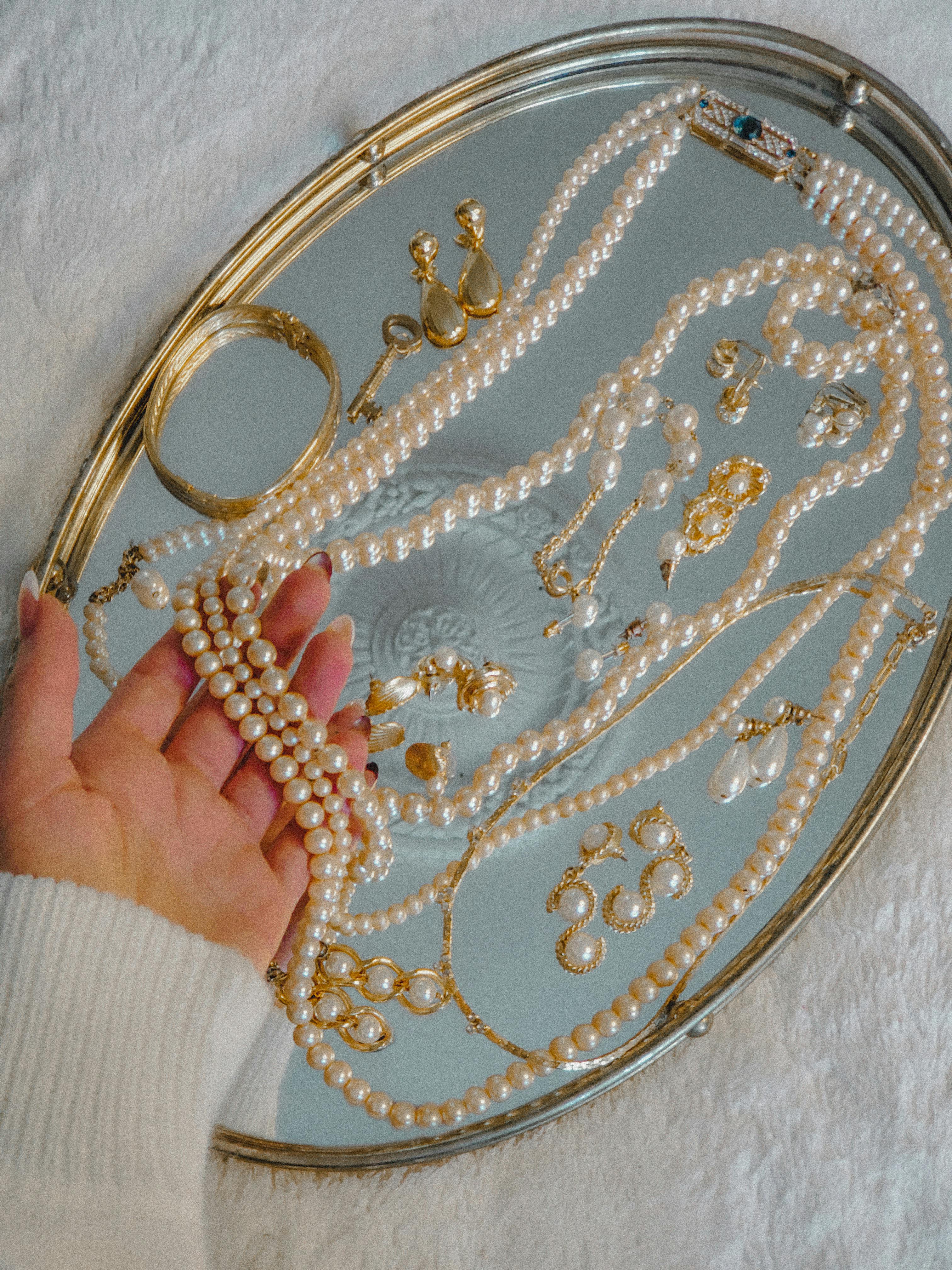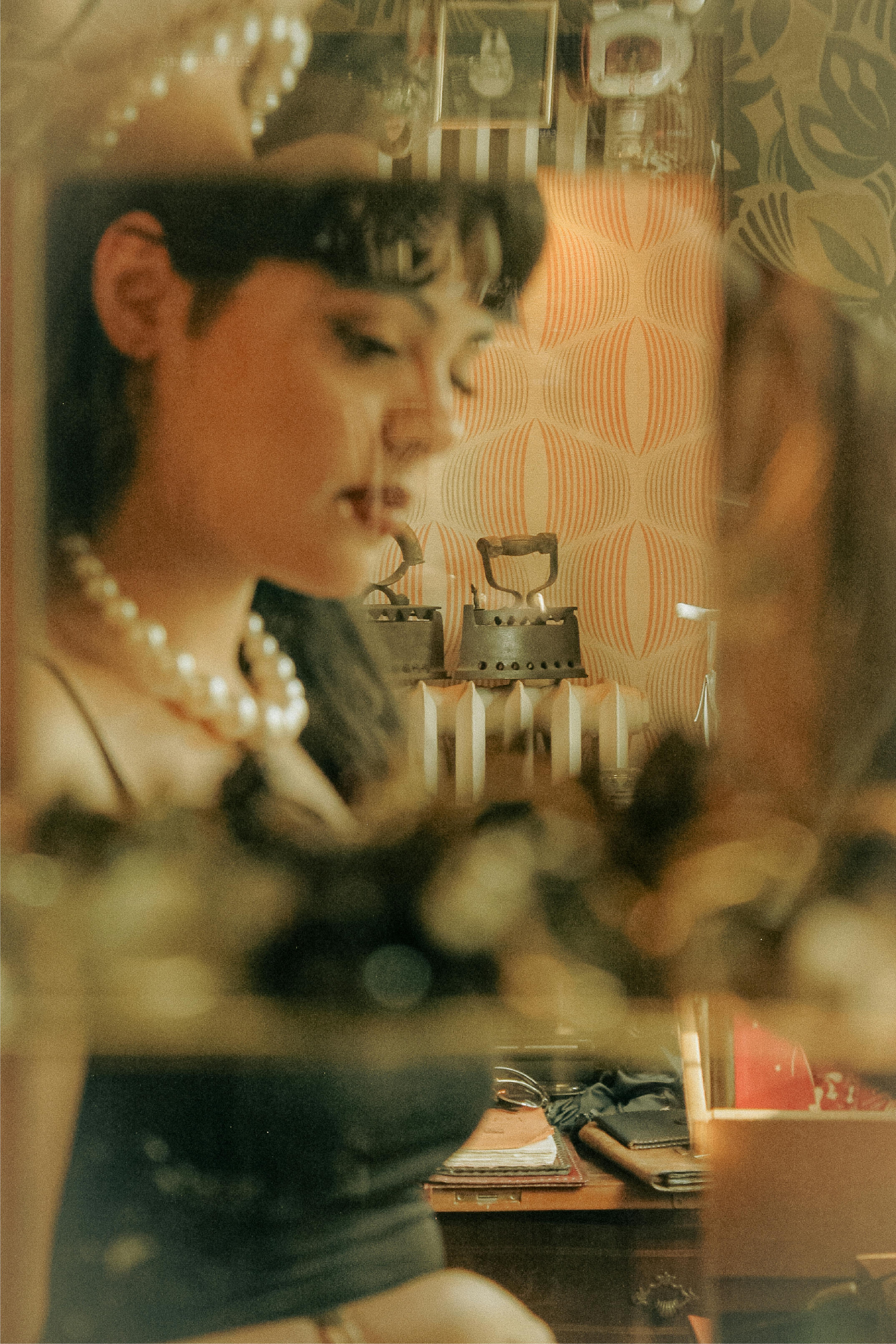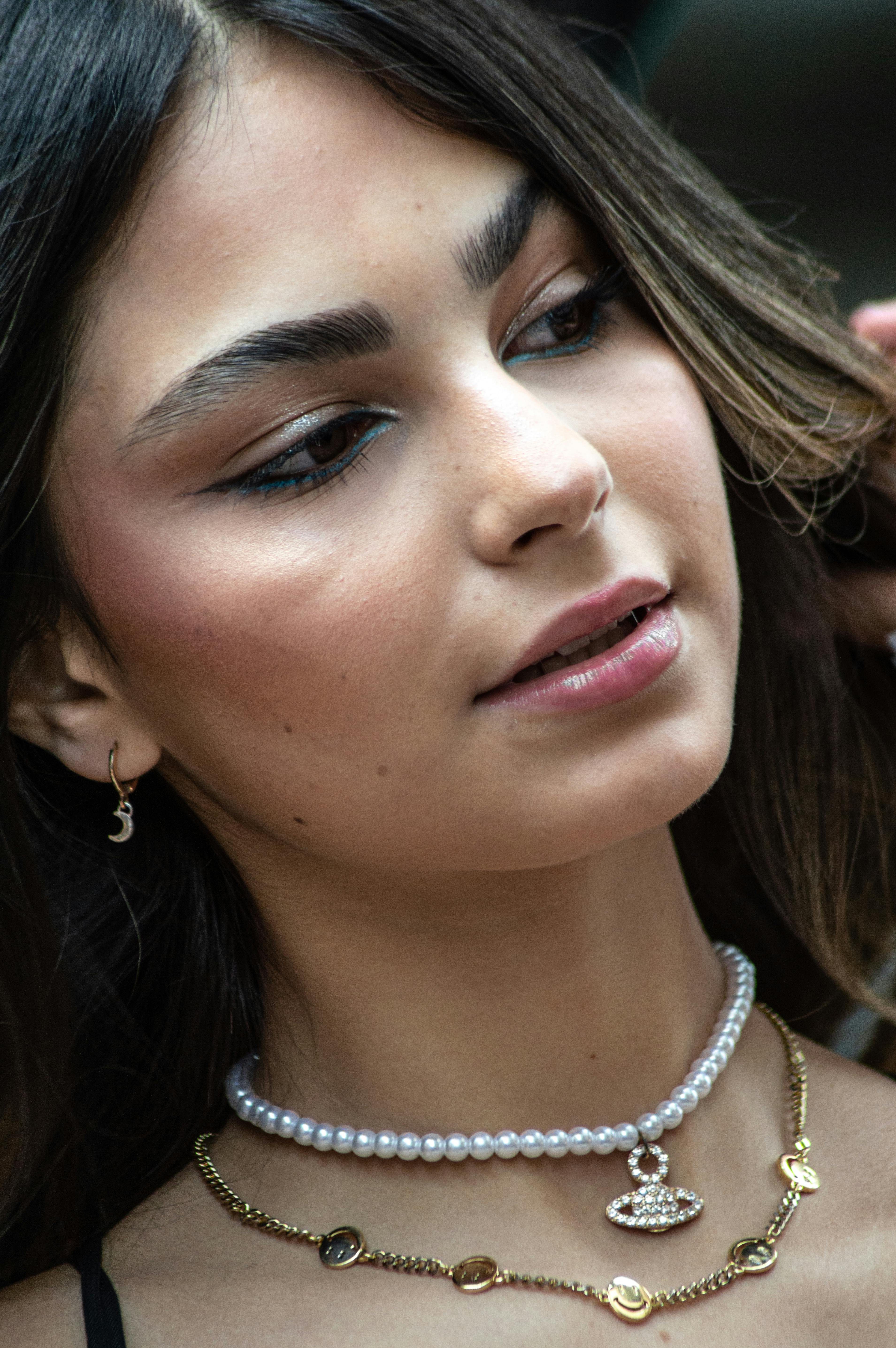
Layering pearls with gold and silver chains can lift an outfit, but it often looks mismatched when tones, weights, or lengths clash. If you struggle to make classic pearls sit comfortably beside yellow or white metal, you are not alone, and small styling choices make the difference.
This post shows how to match pearl tones to metal hues, pick a dominant metal with accent pieces, and balance lengths, weights, and proportions for a coherent look. You will learn simple layering strategies, texture combinations, and care routines that keep mixed-metal pearl necklaces looking intentional and polished.

Match pearl tones with metal hues
Start by identifying your pearl's undertone and match it to the metal: warm cream or champagne pearls harmonise with yellow or rose gold, pure white or silvered pearls suit white gold or silver, and grey, black, or peacock-toned pearls pair best with white or oxidised silver. Create a dominant metal as an anchor by repeating it in a chain, clasp, or pendant setting so the eye has a constant reference point, then introduce a contrasting metal as a deliberate accent. Use small bridging details to smooth transitions, for example a tiny gold bead on a silver chain, connectors in a middle tone, or a two-tone link that links the different colours together. Keep scale and lustre in mind so metal weight and pearl size feel balanced, pairing delicate seed pearls with fine chains and larger, high-lustre or baroque pearls with more substantial links.
Test combinations in natural light and on skin to see whether tones complement or clash, holding pearls next to each metal and adjusting one element at a time rather than remaking the whole look. Match chain thickness and finish to the pearl's presence so each piece supports the other, which helps mixed metals read as intentional. When you combine undertone matching, a clear anchor, small bridging details, and appropriate scale, the result feels coherent and thoughtfully put together.
Anchor grey pearls on gold-plated silver for mixed metal harmony

Choose a dominant metal and add accent pieces
Anchor the arrangement by choosing a dominant metal and repeating it across most pieces, using the second metal as an accent in about a two-to-one ratio so the eye reads a clear hierarchy. Introduce a linking element that contains both metals or pearls set into mixed-metal findings, such as a connector, clasp, or pendant, to immediately unify disparate chains. Make sure visible jump rings and clasps echo the dominant metal to give the grouping a deliberate, finished look.
Layer deliberately by varying chain lengths and thicknesses: keep pearls on a softer, shorter strand close to the throat, then add longer, chunkier gold or silver chains to establish scale and avoid visual clutter. Match the colour temperature of the pearls to the metal, pairing warmer cream or golden pearls with yellow gold, whiter or grey pearls with silver, and using neutral or champagne pearls as a bridge between both tones. Pair lustrous pearls with polished metal, and introduce matte or textured links sparingly for contrast rather than dominance. Small details, from clasp finishes to a single mixed-metal pendant repeated across the arrangement, help the ensemble read as intentional rather than mismatched.
Choose a short silver chain pearl pendant for polished layering
Balance lengths, weights, and proportions
Build layers by length and visual hierarchy, aiming for three tiers when possible: a short pearl strand nearest the neck, a medium metal chain at the collarbone, and a longer chain with a pendant or single pearl, with enough spacing so each layer reads separately and avoids a tangled look. Match visual weight, not only colour, by pairing small pearls with fine chain gauges and large pearls with chunkier chains, because mass and shine determine perceived weight more than metal tone, which keeps elements balanced rather than allowing one component to float or overpower the rest. Introduce repeating elements, such as tiny gold or silver spacer beads or a connector that combines both metals with a pearl, to give the eye a pattern and make mixed metals read as intentional.
Anchor the composition with a focal point and controlled asymmetry by choosing one dominant piece, such as a pendant or the largest pearl, and positioning it centrally or slightly off centre to ground the layers. Alternate warm and cool metals across tiers so no single metal monopolises the composition, and vary finishes to create either cohesion or deliberate contrast. Match glossy pearls with high-polish chains for unity, or pair lustrous pearls with a matt finish and slimmer chains for subtle contrast, while keeping chain styles similar in thickness so the different textures move together. Repeat a small motif across the layers, for example a tiny bead or a recurring link, to tie the mixed metals into a single, intentional arrangement.
- Neckline and occasion recipes: three-tier templates you can copy — for a V-neck, use a short pearl strand 38 to 40 cm, a medium chain at 45 cm, and a long pendant at 55 to 60 cm so the pendant sits inside the V; for a round neckline, choose a collar-length pearl 35 to 38 cm, a collarbone chain 40 to 45 cm, and a long pendant 50 to 55 cm with 4 to 6 cm clear spacing between tiers; for evening, stack shorter pieces (32 to 38 cm, 36 to 42 cm, 40 to 46 cm) with varied textures so each layer reads independently while remaining close to the neck.
- Pair metals, finishes and visual weight with these heuristics: match visual mass rather than colour — pair small pearls 3 to 5 mm with fine chains about 0.7 to 1 mm gauge, medium pearls 6 to 8 mm with 1 to 1.5 mm chains, and large pearls 9 mm and up with chunkier 1.8 to 2.5 mm chains so no element looks to float; alternate warm and cool metals across tiers, vary finishes to create cohesion or contrast, and repeat a tiny spacer bead or a bi‑metal connector with a single pearl to make mixed metals read intentional.
- Troubleshooting and composition fixes: anchor one dominant piece, centrally or slightly off centre, to ground the arrangement and create controlled asymmetry; keep 4 to 6 cm between tiers to avoid tangles, use a multi‑strand connector or clasp saver to stop slipping, and match chain thicknesses so textures move together; scale lengths down by about 4 to 6 cm for petite frames and increase similarly for broader frames, and favour shorter top layers with long hair so the focal pendant remains visible.

Mix textures and styles for cohesive layering
Begin with an anchor necklace, a single mid-weight piece such as a pendant with a larger pearl or a bold link, to set scale and tone so finer chains complement it rather than compete. Deliberately mix textures and widths, pairing smooth round pearls with a rope chain, a box chain, and a thin cable chain, so contrast creates a visual rhythm that reads as an intentional layer. Harmonise colour undertones by choosing warm cream or champagne pearls for gold and cool white or grey pearls for silver. When you wear both metals, add a bridging two-tone link or short mixed-metal chain to unify the palette.
Echo a metal, shape, or small pearl motif in earrings, rings, or a bracelet to distribute the same elements around the body and balance a dominant chain. Control proportion by layering necklaces in graduated lengths and leaving a centimetre or two between each to prevent overlap and tangling. That clear spacing, combined with varied lengths and repeated motifs, creates negative space and distinct lines so each texture and style reads deliberately.
Add a fine silver drop pearl to anchor your layers.

Style and care for layered pearls and chains
Begin with an anchor piece, then build around it with two to three additional chains of differing length and weight so each element sits separately. Use odd numbers for balance, and vary texture, for example a smooth pearl strand, a fine chain, and a chunkier chain, to create rhythm without crowding the neck. Repeat a metal tone at least once, or add tiny metal beads or spacers that match each chain to create visual links, and match finishes rather than only colour because consistent reflectivity helps the eye read the mix as intentional.
Treat pearls as organic and softer than metals, avoid abrasive cleaners, ultrasonic baths, and strong chemicals including perfumes and cosmetics, wipe pearls with a soft cloth after wearing, and store them separately in a soft pouch to avoid scratching. Have knotted strands restrung periodically to prevent loss from wear on the thread. When metals feel mismatched, introduce a bridging element such as a pendant that combines both metals, a spacer chain with both tones, or small metal beads between pearls to harmonise the palette, and if a pearl strand appears warm or cool against your chains add a chain with the opposite tone close to the pearls so reflections help balance the perceived colour.
Mixing pearls with gold and silver becomes cohesive when you match pearl undertones to metal, choose a dominant metal as an anchor, and balance lengths, weights, and textures. Small bridging details, repeated motifs, and thoughtful spacing turn mixed metals from accidental clashes into intentional, wearable layers.
Use the guidance in the headings on undertone matching, a dominant metal with accents, graduated lengths, and texture contrast to create balanced, three-level necklaces that read as a single composition. Test combinations in natural light, repeat a metal at least once, and care for pearls gently so your layered choices remain purposeful and polished.






